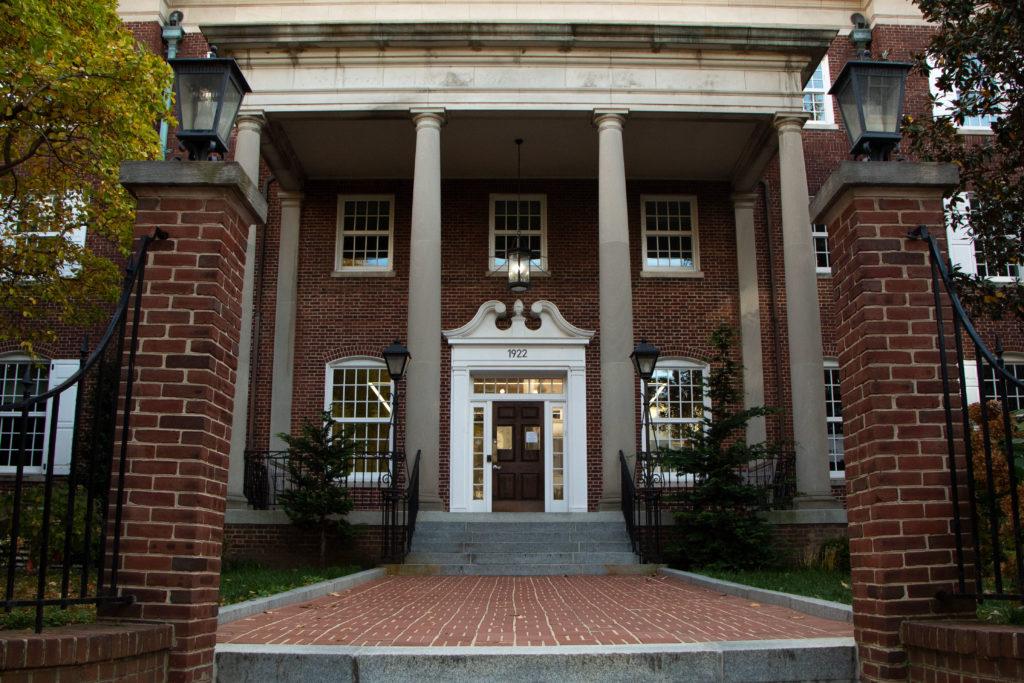A year after GW reimagined everything from its logo to its taglines, the new brand now faces its most important test: to help sell the University’s biggest teaching and research ideas of the decade.
To bring in donations, fundraisers will use the same kind of D.C.-centric messages emblazoned around campus – like “Make History” and “Knowledge in Action” – to unify its 10 schools and hundreds of departments that have different priorities and specialties.
“We want to speak with a single voice,” Vice President for Development and Alumni Relations Michael Morsberger said. “We want to make sure that our elevator speech – our preamble, if you had a few sentences to describe why GW, why now – all feel connected.”
Morsberger said fundraisers will pitch themes that speak specifically to GW, like leadership and citizenship, to represent the institution as a whole, instead of letting each school’s development officers promote only their programs’ strengths.
The pressure is high to fine-tune GW’s message as it looks to stand out in a competitive fundraising climate. Eleven out of the 14 schools that GW considers its peers have recently launched campaigns looking to raise more than $1 billion, and GW could launch its own campaign within the year.
The campaign will fund scholarships, a dozen research institutes and about 100 new faculty positions.
But as the likely billion-dollar campaign looks to pay for dozens of academic, research and student life priorities across the University, professors warn that an oversimplified message will fail to show GW’s competitive advantages.
Steven Livingston, a professor of media and public affairs, said he fears that “core strengths” that happen on a micro-level, like in departments and with individual faculty members, will be lost in the messages.
“There is always a danger that those doing the branding will do so without complete awareness of everything that makes GW special. No organization has complete self-awareness,” Livingston said.
That could force schools to push out their own messages, said adjunct assistant professor Ellen Zavian, who has taught marketing and entrepreneurship at the GW Business School.
If GW’s marketing pitches don’t address business programs specifically, Zavian said the business school could use its own marketing taglines that stress social responsibility and ethics in business.
“If the tagline isn’t all-encompassing and doesn’t address the business school’s initiatives, then it’s a failure,” Zavian said.
University President Steven Knapp said the messages would focus on the same themes in GW’s recently approved strategic plan – globalization, citizenship, governance and policy and interdisciplinary studies. But he said it would be tough to boil down the strengths of thousands of faculty members.
And despite research and science pushes, top officials said they’re going to highlight GW’s traditional strengths: politics and media.
“It’s always tough because we’re such a complex institution,” Knapp said. “Messaging is hard because it’s hard to pick the four key themes that are going to bring everything together.”
The messages will have to be strong enough to turn around GW’s traditionally low fundraising history and put GW on the map as a destination for philanthropists.
Lorraine Voles, who manages the University’s marketing and branding, said GW’s most unique and most universal characteristics are citizenship and leadership.
“I think that’s a real sweet spot for us,” Voles said. “I think it’s a very interesting field and area for us because of our location, because of the type of student that comes here and because of what’s traditionally been our strong suit.”
Matt McDermott, a higher education advertiser who followed GW’s rebranding closely, said unified messaging across every school at an institution is crucial for a campaign to haul in donations. Harvard University, too, is selling itself as “One Harvard” in its upcoming fundraising campaign.
“I find it’s actually a great way to help each school focus its message. If a university defines itself as bold and forward thinking, each of its schools should have a shade of that in their messaging, and each school’s benefits should support that bigger message. It’s symbiotic,” McDermott said.
– Sarah Ferris contributed to this report.







